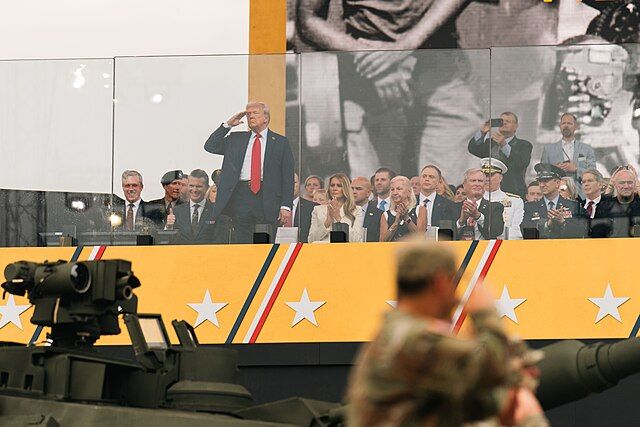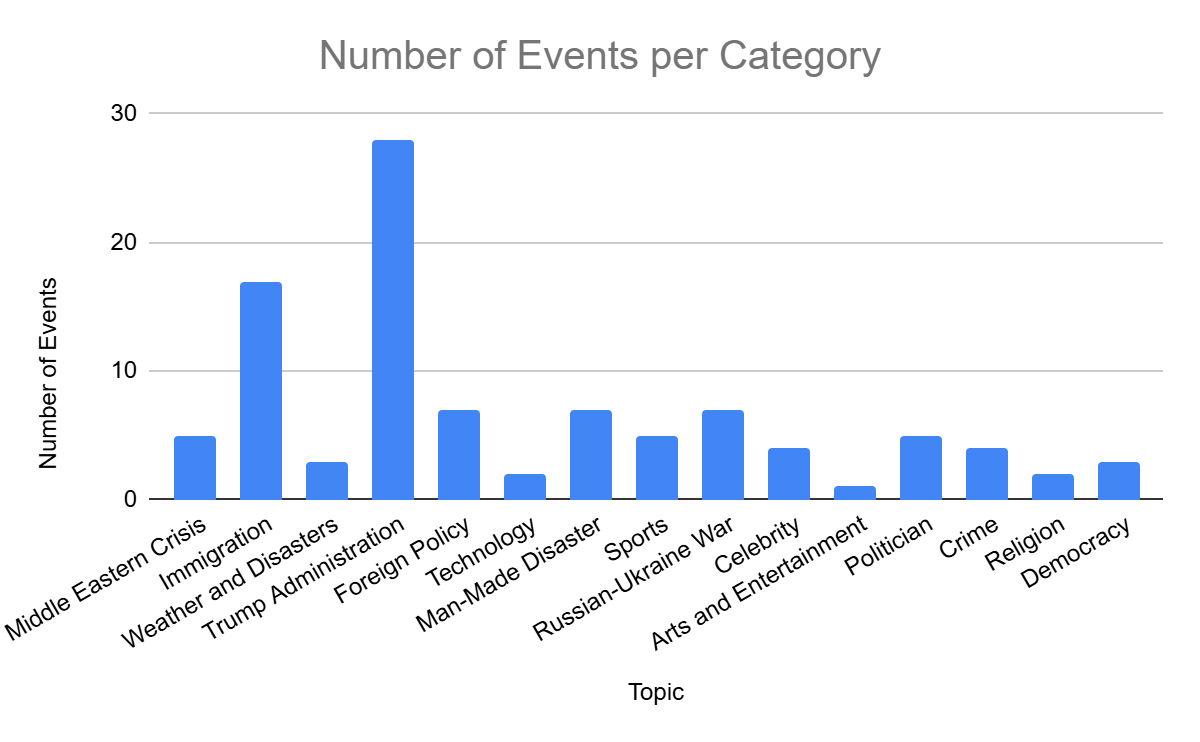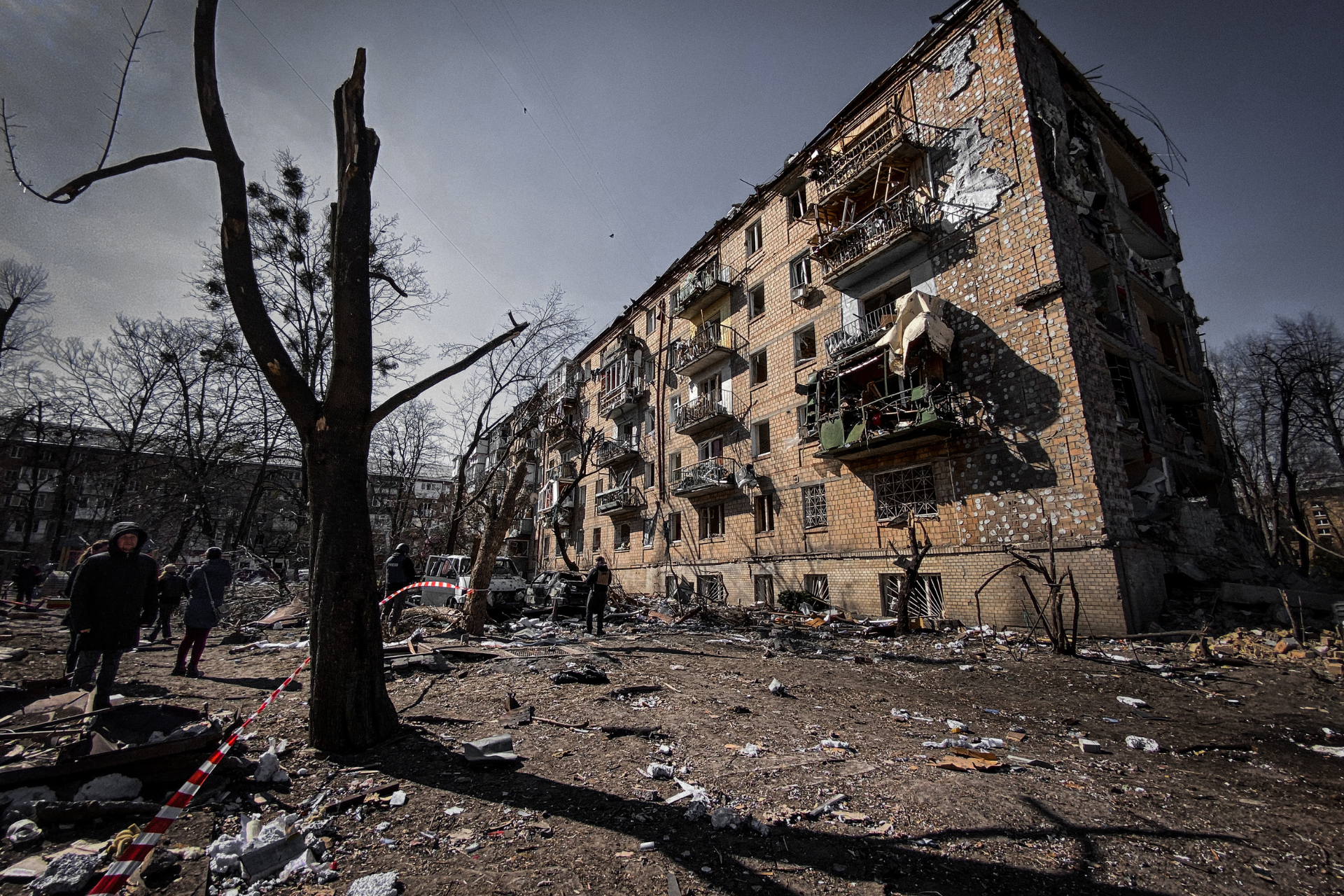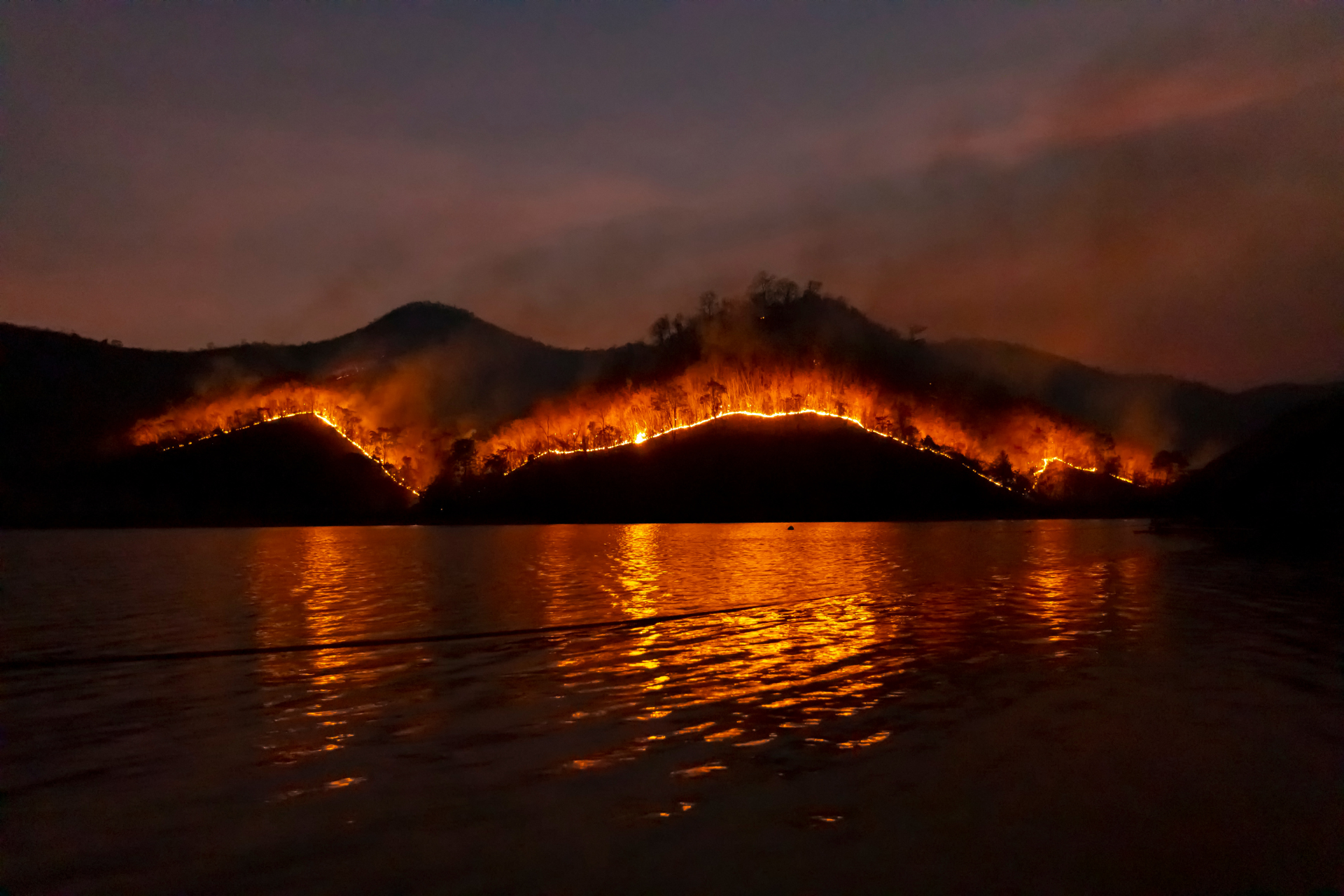The Trump Effect: Shift in Coverage on the Ukraine War
By Delphine Gardiner
During his campaign last year, Trump declared that he would be able to end the Russian-Ukraine War in just one day if elected president. Now, two months into Trump’s second term and three years after Russia’s invasion, there is a notable shift in media coverage on the Russian-Ukraine War as pressure to end the conflict mounts. Since Trump took office, coverage has become more polarized as seen in the Media Bias Detector, which tracks news coverage from the top ten US publishers. Here is what it shows:
From the beginning of 2024 up until Trump’s inauguration, this was the average political lean of coverage on the Russian-Ukraine War:
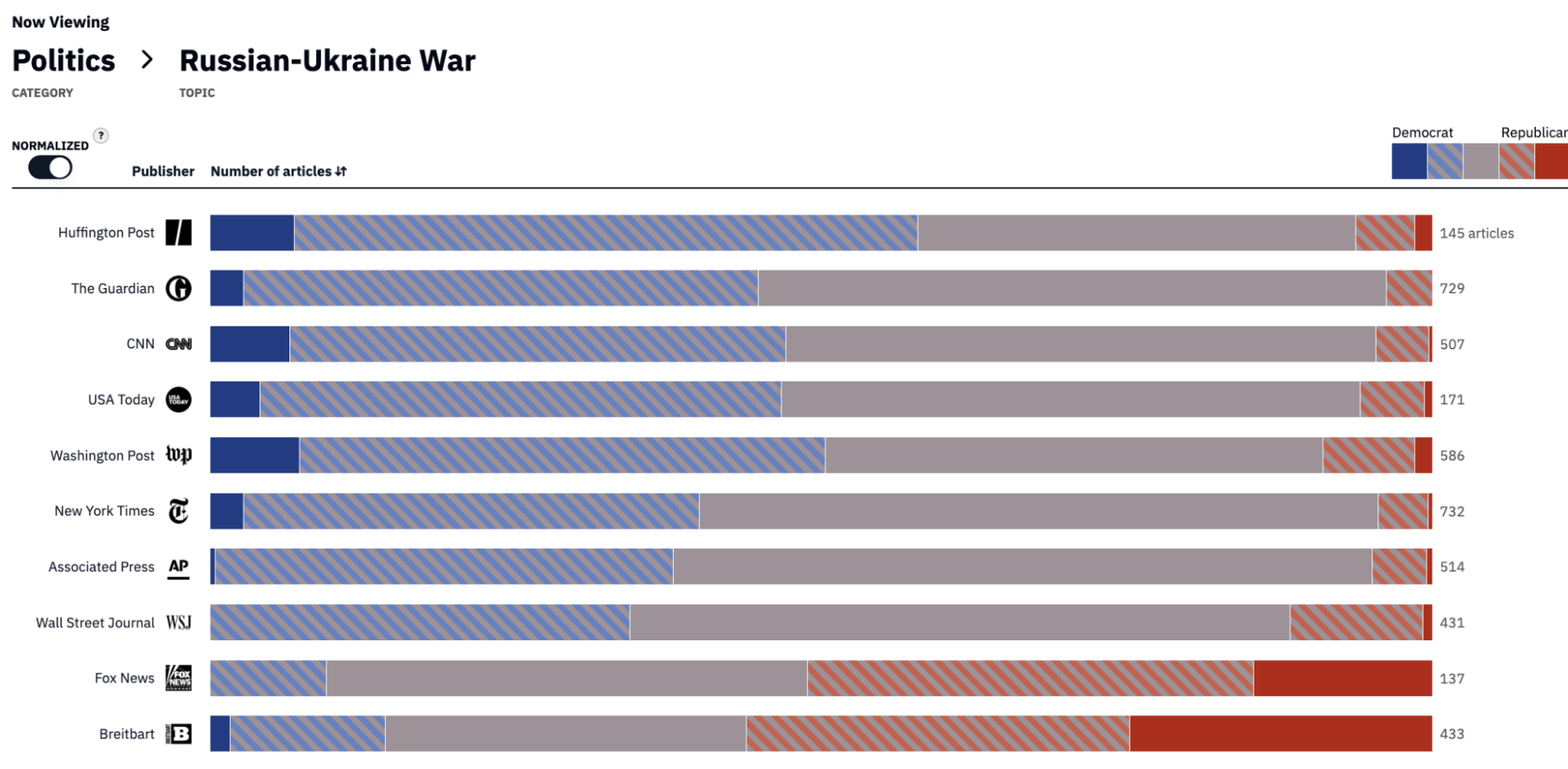
During this period, The New York Times wrote the most articles on the Russian-Ukraine War, with Fox News and HuffPost writing the least number of articles. As a whole, the ten publishers wrote mostly neutral coverage, except for Fox News and Breitbart with overwhelmingly right-leaning material. The majority of these articles focused on US Foreign Aid.
And here is the average tone before Trump:
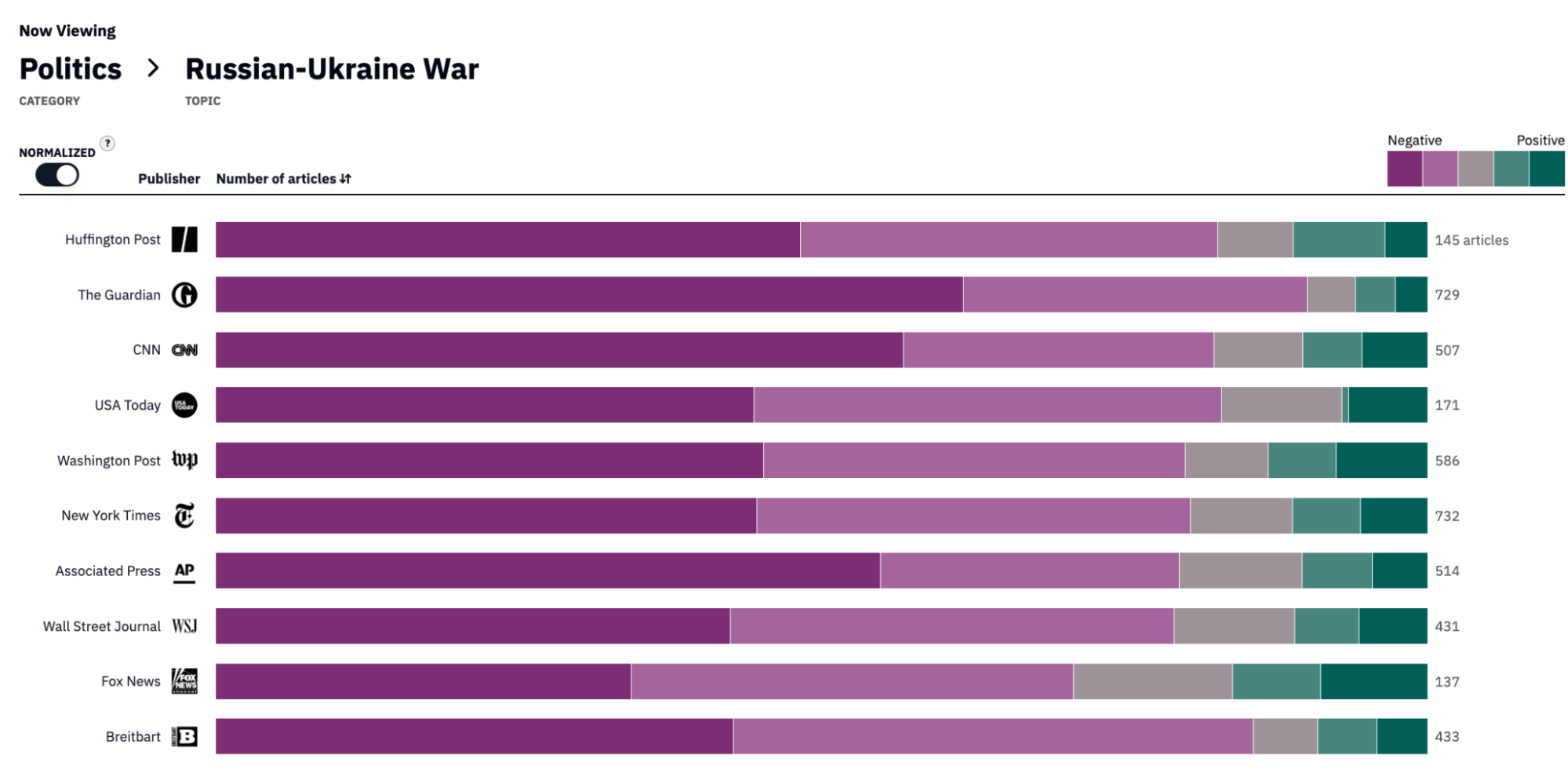
This is the average political lean of post-inauguration coverage up until 2/27/25:
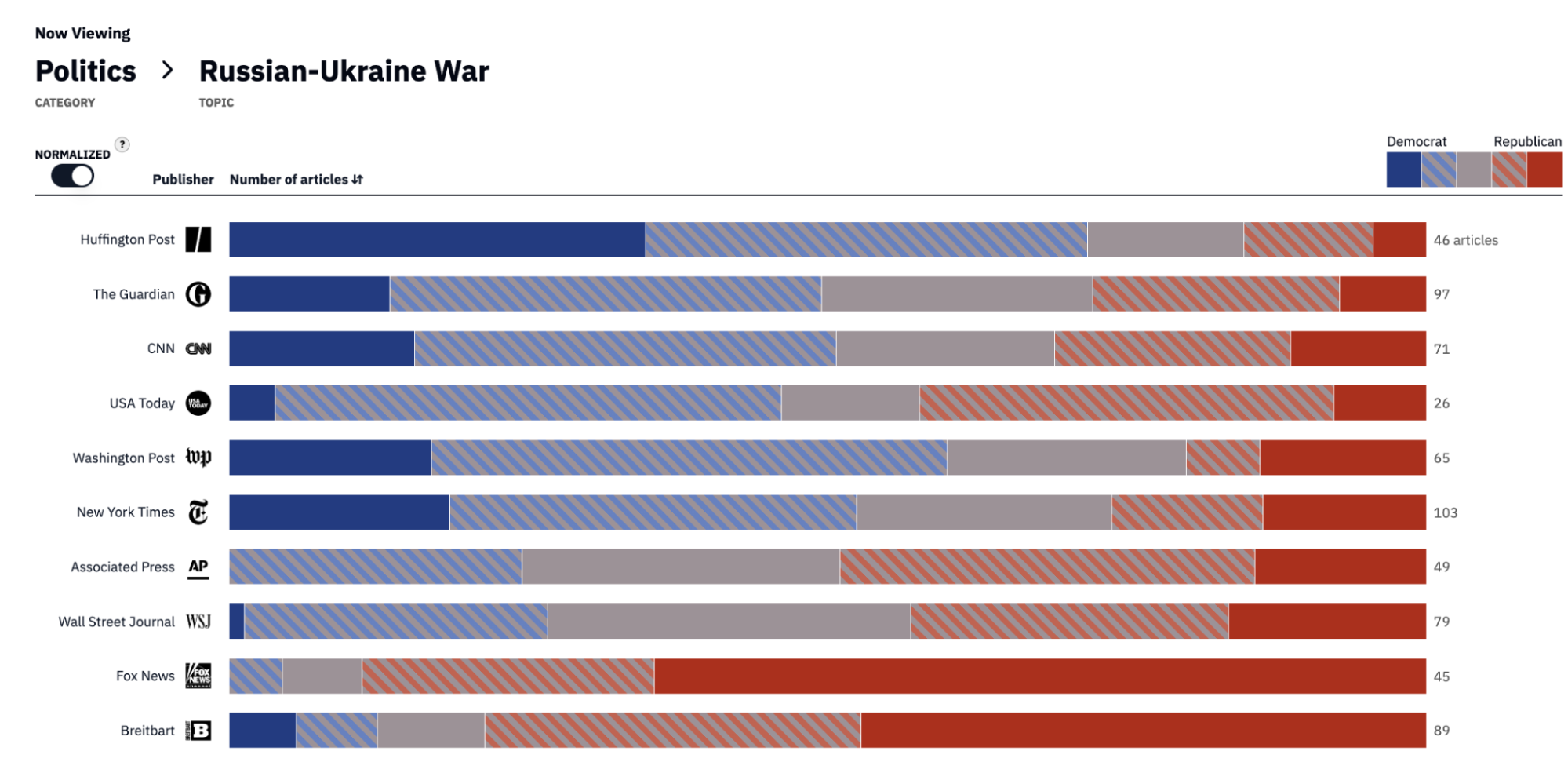
Since Trump’s second term, Associated Press, and Wall Street Journal, USA Today and CNN have published more right-leaning material, shifting away from their previously neutral coverage of the Russian-Ukraine War. Coverage on US Foreign Aid, by The Guardian and New York Times, appears more left-leaning (it was neutral before Trump’s inauguration). Compared to 2024, coverage of the War this year has become more polarized, (except coverage on Russian Military Operations which has remained consistently neutral on average). Among all the subtopics of Russian-Ukraine War coverage, US Foreign Aid coverage is the most partisan.
And average tone of coverage since Trump’s presidency:
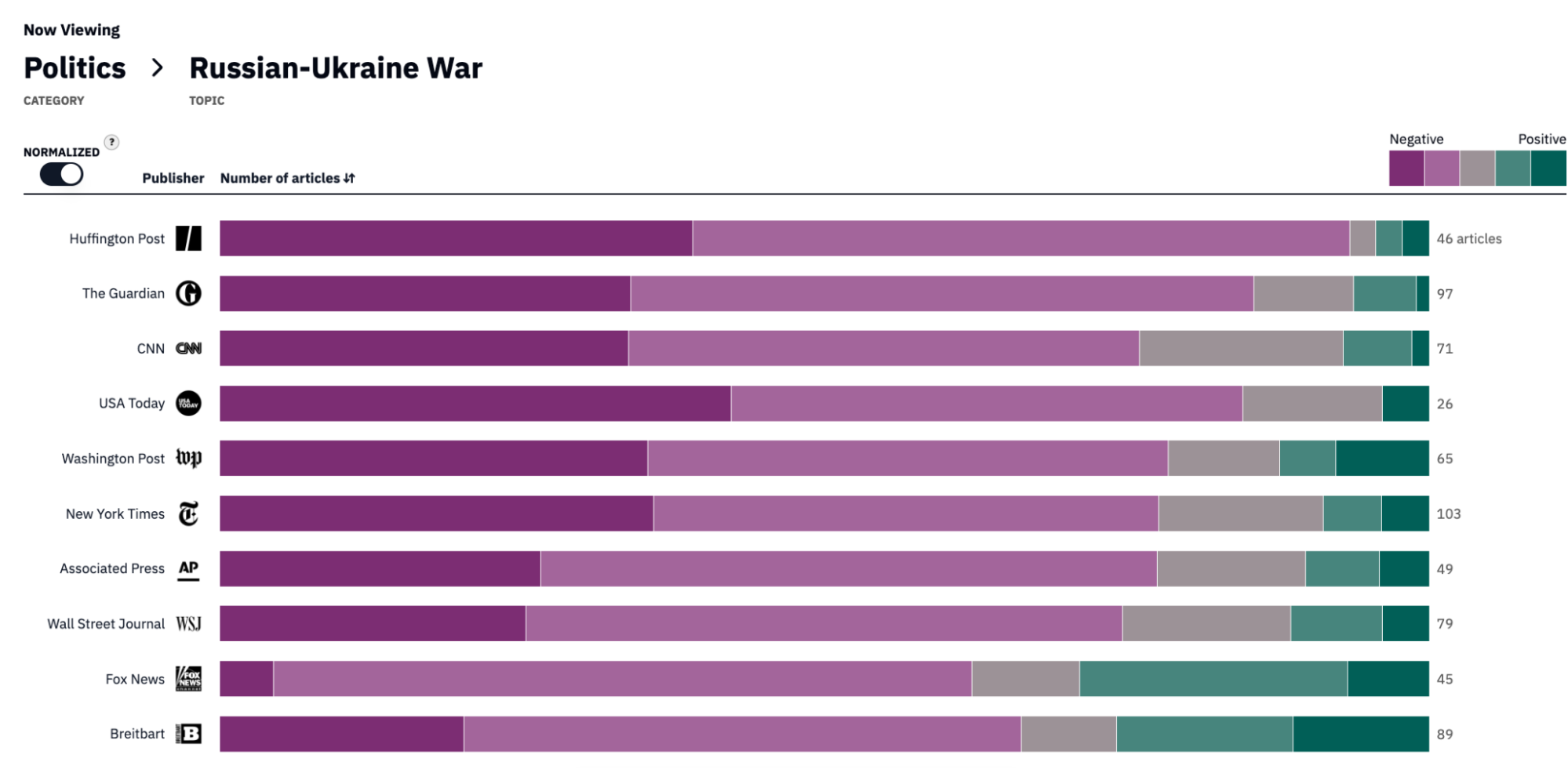
In the above figure, the only outlets that have published more positive coverage over time are Fox News and Breitbart.
In addition to tracking coverage, the Media Bias Detector also highlights the top events related to the Russian-Ukraine War and how much they were compared to other events. These are the latest developments that received enough coverage to appear under the Events page of the Media Bias Detector:
A few weeks ago, Zelensky was heavily attacked by Trump and Vance in a heated meeting discussing the minerals deal which Trump proposed in the beginning of February. This became the second most covered news event with 45 article clusters (the most covered news event of this year so far is the DC Plane and Helicopter Crash with 50 article clusters). The majority of the facts in articles on Trump-Zelensky Meeting Fallout focused on Zelensky’s “ingratitude” to Trump and the US, with fewer facts focused on the minerals deal which was the primary reason for Zelensky’s White House visit.
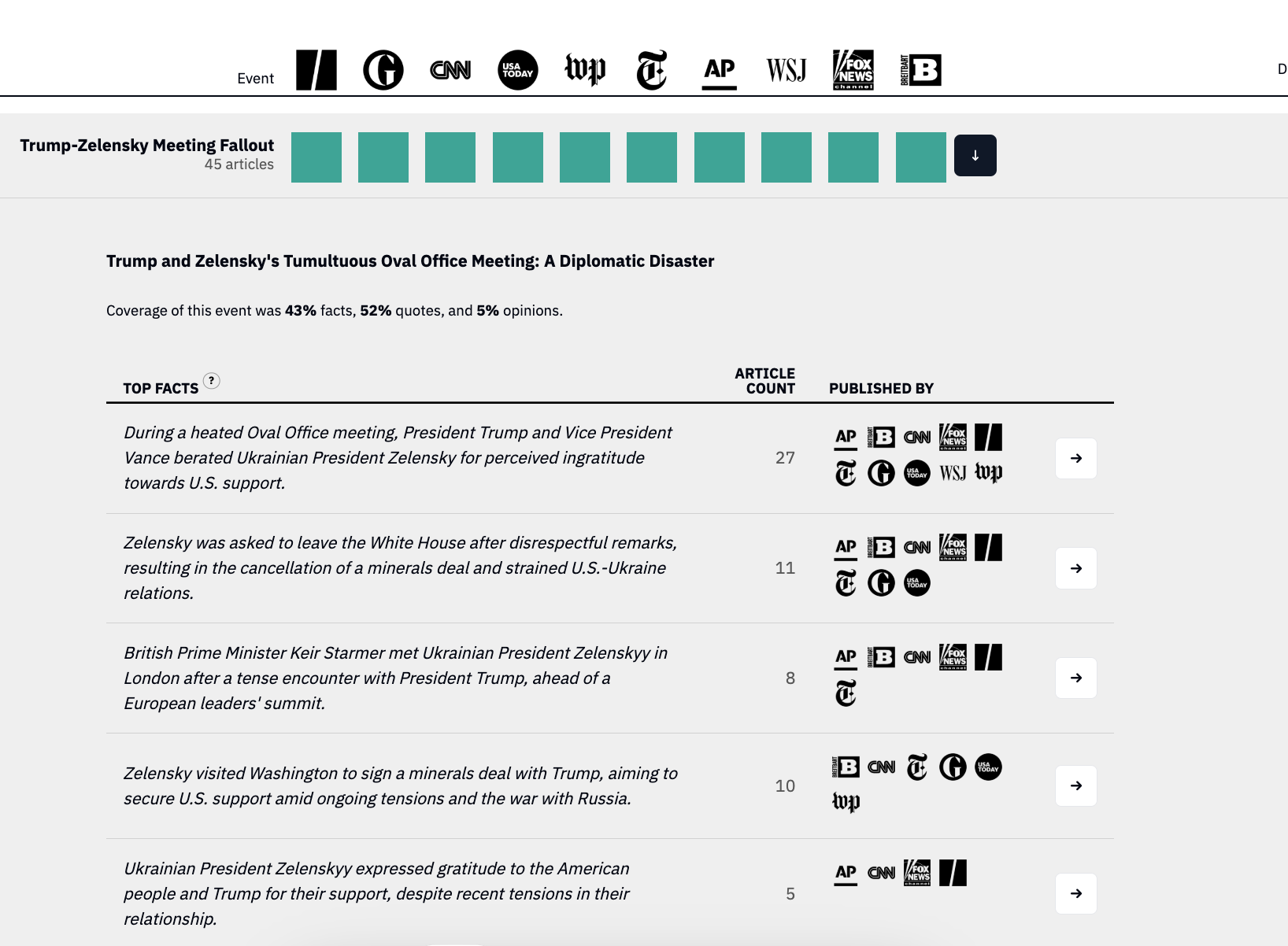
In the three days following the incident, this was the average political lean and tone of coverage on this event:
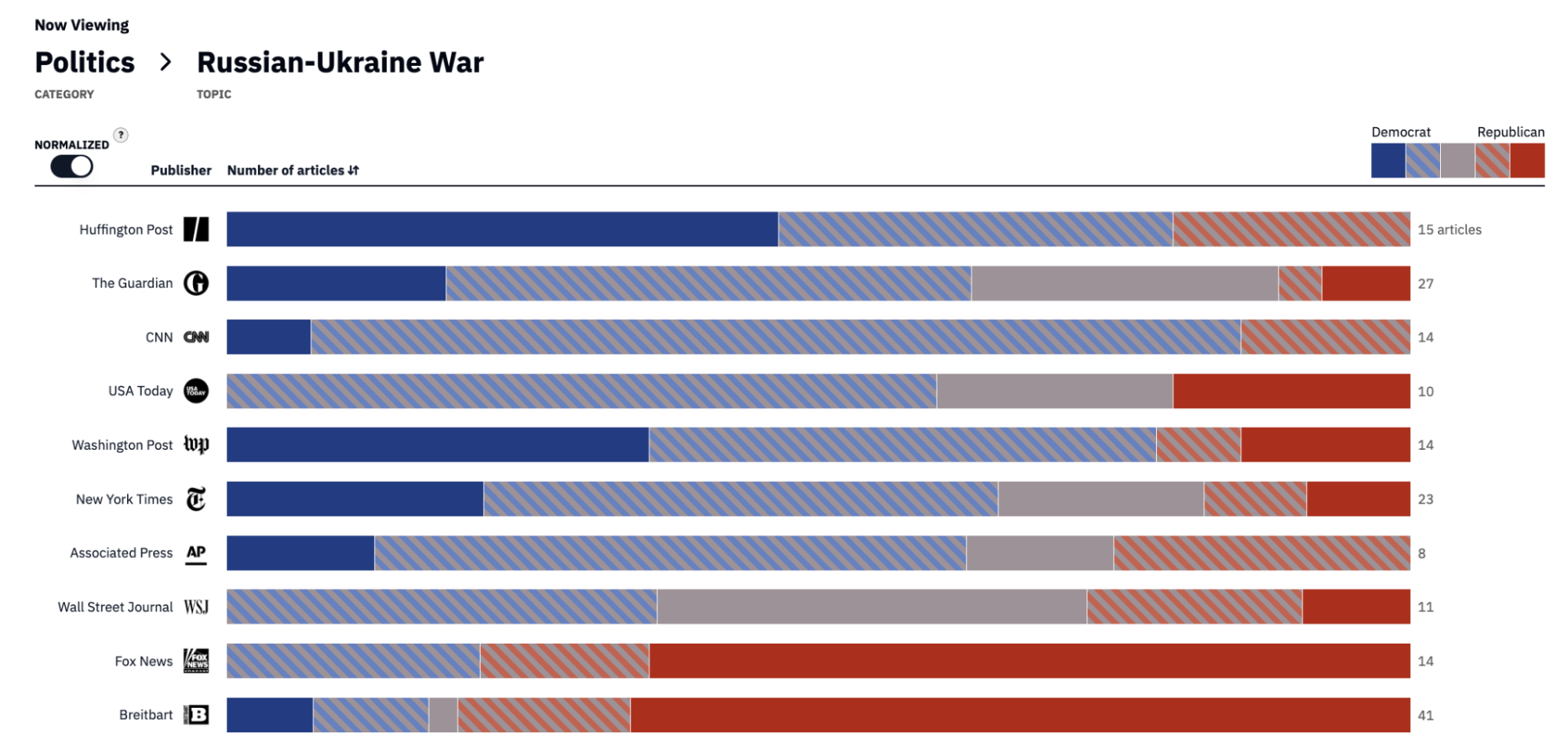
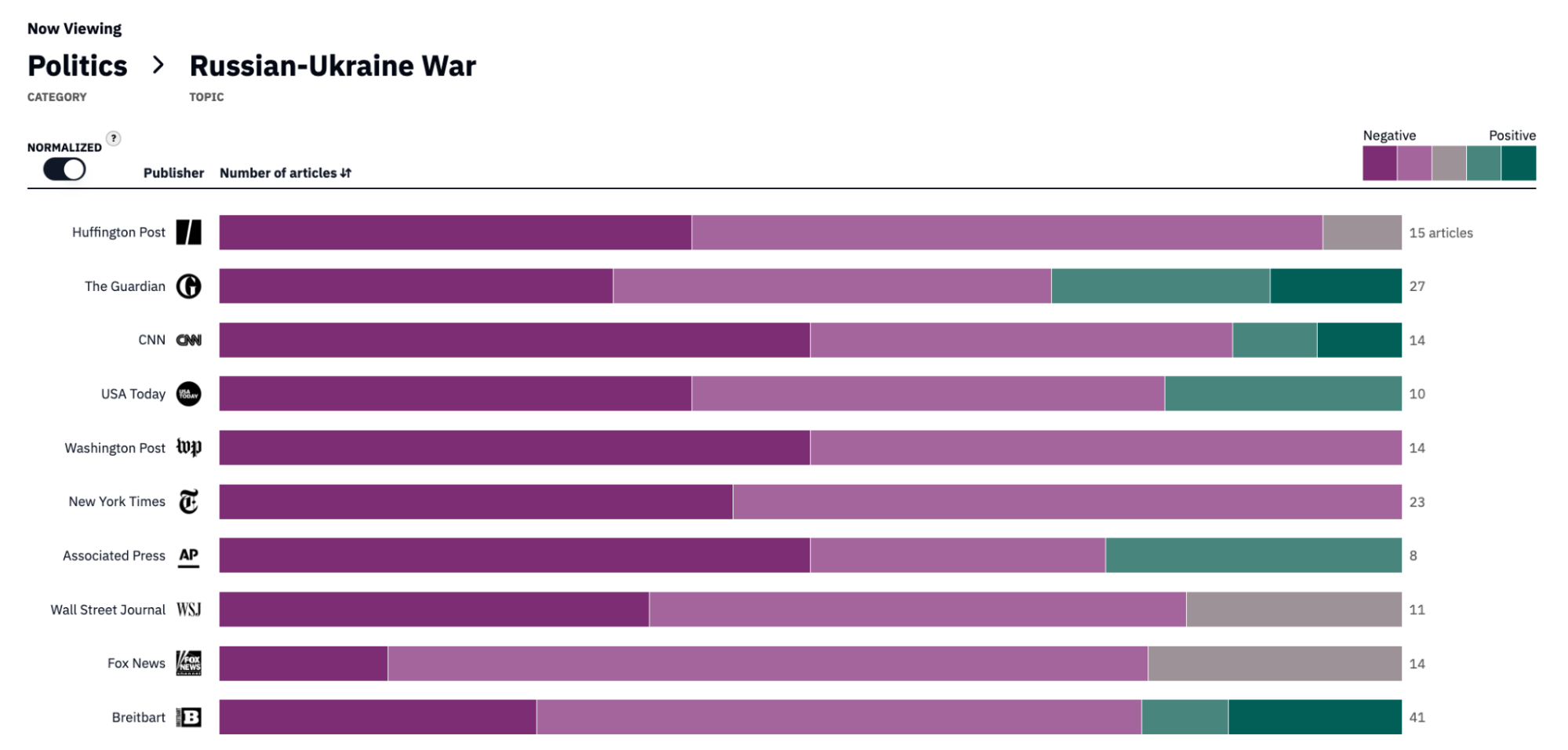
Recent news on the War has been especially more negative compared to its reporting in the last year. Though coverage on the Russian-Ukraine War has been overwhelmingly negative in this period, every publisher the Media Bias Detector tracks has had some coverage lean positive, but the most recent days of coverage show that HuffPost, Washington Post, New York Times, Wall Street Journal, and Fox News have shifted in by publishing only negative articles.
On the third day after the incident with Zelelnsky, news coverage on the aftermath of the meeting had noticeably declined, with little coverage on Europe’s united support for Zelensky.
In the previous week on 2/19/25, Trump called Zelensky a “dictator without elections” blaming him for the War though it was Russia that invaded first. This appeared as one of the facts under the most covered event of that day, Trump’s Ukraine Controversy.
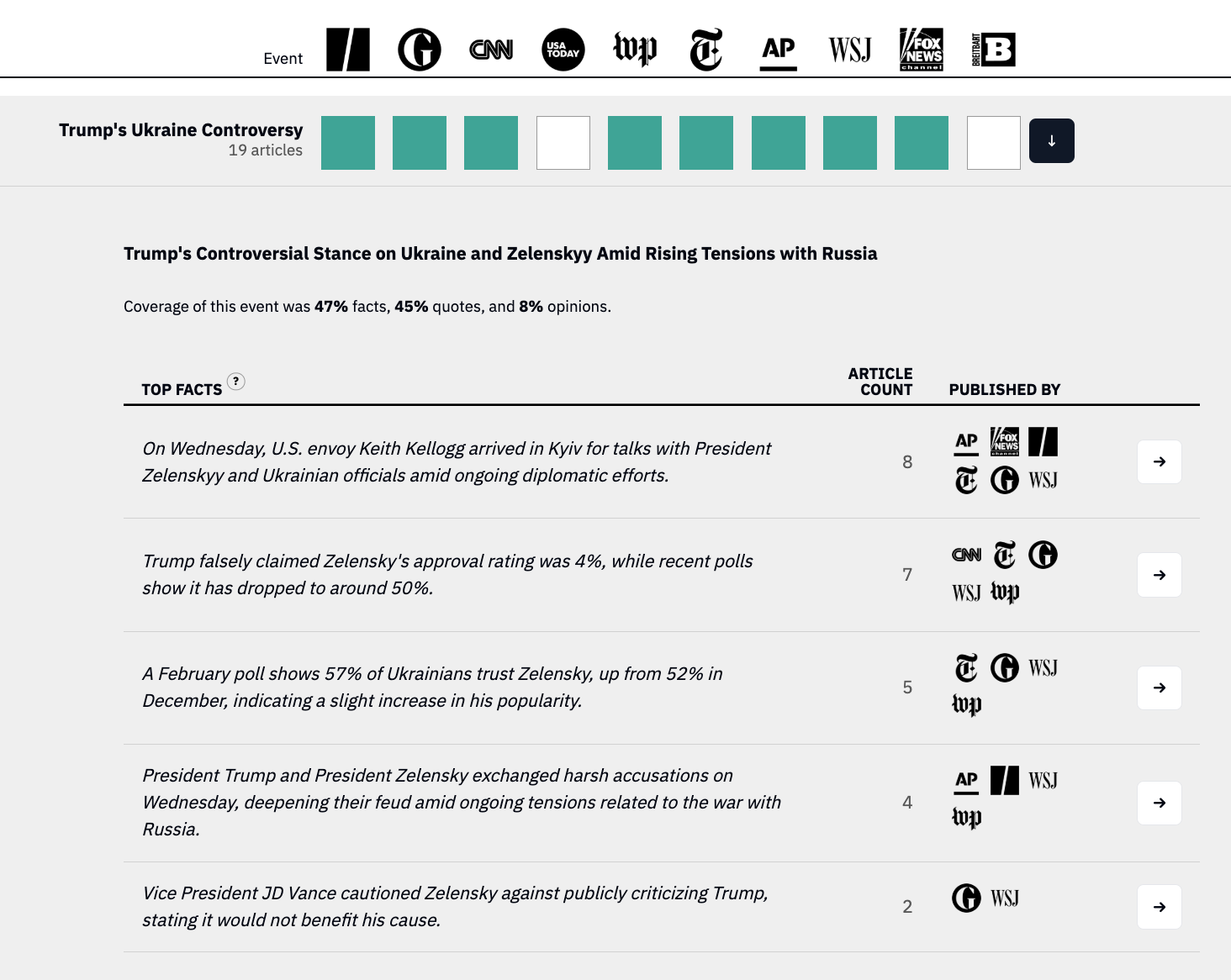
However, coverage of this slowed down and this event did not appear under the events page of the Media Bias Detector until the next week on 2/24/25.
On 2/12/25, Trump had a 90 minute phone call with Putin, which appeared under this Event: Trump’s Diplomacy and Ukraine under the Media Bias Detector the next day on 2/13/25.
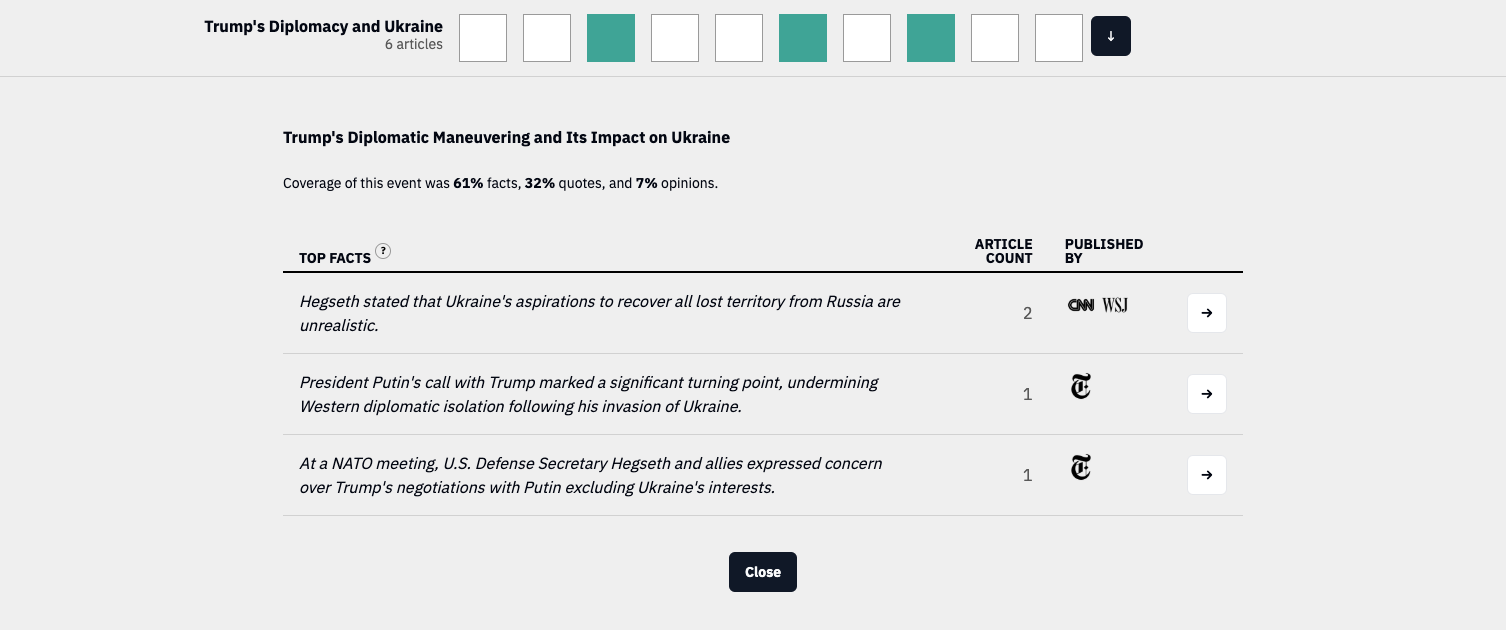
In the screengrab above, “President Putin’s call with Trump” was presented as a fact and not as an individual event, and only appeared in one article cluster (in the New York Times). The lack of coverage could point to a decline in scrutiny towards Trump’s relationship with Putin which aligns with the shift in publishers taking on a more right-leaning stance toward the conflict.
This selective coverage reflects what narratives are most important to the media as they dictate when stories get picked up and how they are prioritized in comparison to other major news events. In the case of the Russian-Ukraine War, highly dramatized events received significantly more coverage compared to other War-related developments. What journalists choose to focus on ultimately influences what readers think are the most important stories to the Russian-Ukraine War and what they should be paying the most attention to.
